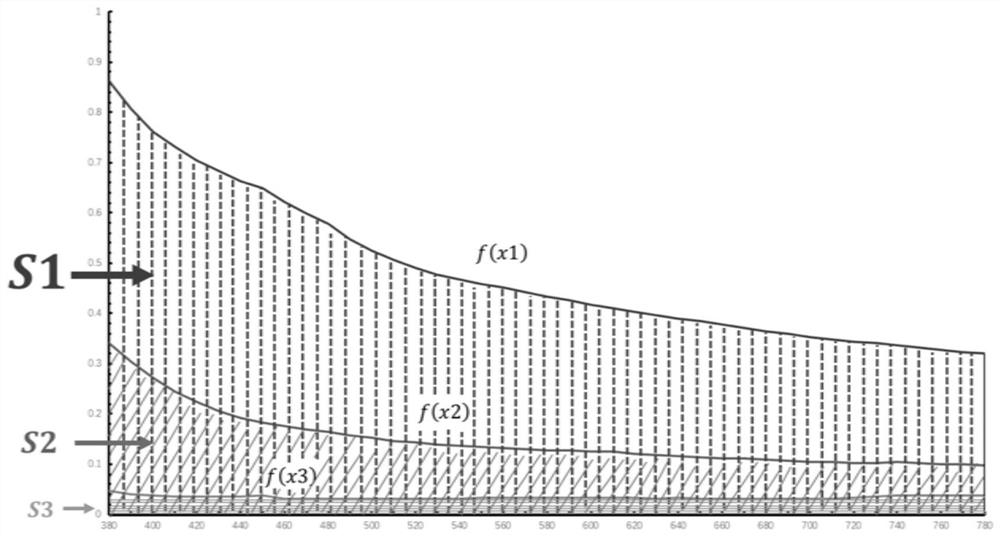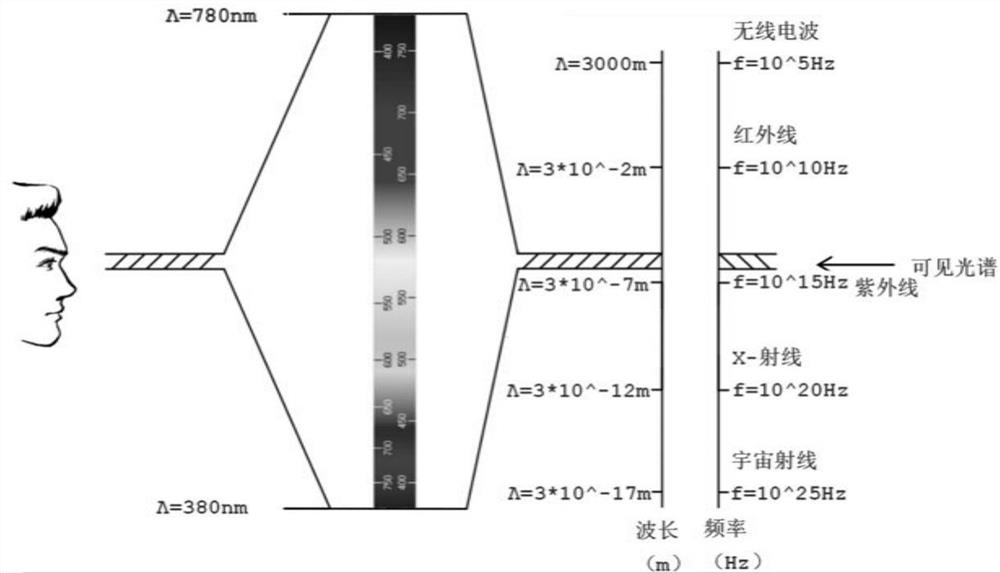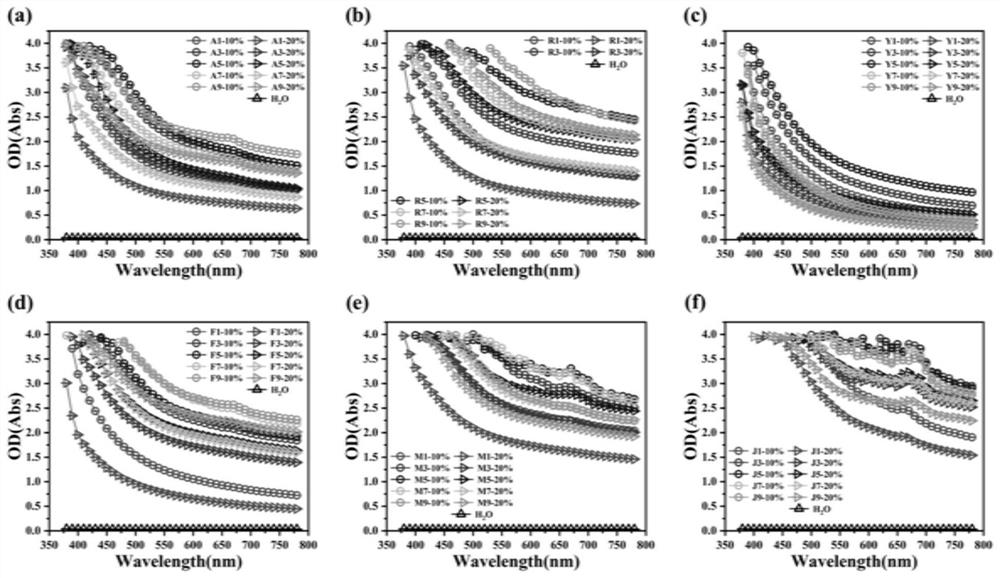Method for measuring decolorization effect of protein polypeptide solution
A protein peptide and solution technology, applied in the field of peptide decolorization, can solve problems such as indistinguishability, and achieve the effect of outstanding practicability and accuracy
- Summary
- Abstract
- Description
- Claims
- Application Information
AI Technical Summary
Problems solved by technology
Method used
Image
Examples
Embodiment 1
[0069] After the fresh oysters were cleaned and shelled, put them into a beater, add 2 times the quality of deionized water, break and mix evenly, take out the oyster liquid and add animal protease (A), whey protease (R), trypsin ( Y), flavor protease (F), compound protease (M) and alkaline protease (J), were enzymatically hydrolyzed for 1, 3, 5, 7, and 9 hours under corresponding pH and temperature conditions, and collected different enzymatic hydrolysis conditions The enzymatic hydrolyzate under the solution was inactivated in a boiling water bath for 10 minutes, and then freeze-dried.
[0070] The dried powder was redissolved in deionized water at 10% and 20%, and after standing at room temperature for 30 minutes, an appropriate amount of sample solution was scanned on a microplate reader at 380nm-780nm intervals of 10nm, and its absorbance in this range was measured.
[0071] The enzymatic hydrolysis conditions are shown in Table 1 below.
[0072] Table 1 Enzymolysis cond...
Embodiment 2
[0078] Due to the different colors of the polypeptide solution samples, this experiment uses watercolor pigments for the determination of the basic color of the solution, and at the same time verifies the feasibility of the established method and the explanation of related principles. Since the gouache pigment is easy to precipitate and the color is darker after dissolving, it affects the determination. The watercolor raw material has a certain degree of transparency, and the materials are gum arabic (adhesive), glycerin / sugar water (wetting agent), phenol (preservative), etc. These materials have an influence on the absorbance of the solution at 380nm-780nm. Smaller, so this experiment selects watercolor pigments for the determination of the experiment.
[0079] Dilute 36 kinds of watercolor pigments of different colors in deionized water according to 500, 1000, 2000, 4000, 8000 and 16000 times respectively. After standing at room temperature for 30 minutes, take an appropria...
Embodiment 3
[0085] Sturgeon skin was used as the raw material of the experiment in this example, 4 times the mass of deionized water was added, and compound protease was added to enzymolyze at 50°C for the same time, the enzyme was inactivated, and centrifuged to obtain the supernatant as sturgeon skin protein polypeptide solution.
[0086] Five kinds of activated carbon commonly used in industry were selected to decolorize the sturgeon fish skin protein polypeptide solution, adding activated carbon at 0.15%, 0.30%, 0.45% and 0.60%, respectively, and decolorizing at 50°C for 30 min, 60 min, 90 min and 120 min respectively , and use filter paper to filter, and add the same quality of food-grade diatomaceous earth as a filter aid. Put the sturgeon fish skin protein peptide solution obtained after suction filtration at room temperature for 30 minutes, then use a microplate reader or an ultraviolet spectrophotometer to scan the sample solution and ultrapure water at intervals of 10nm from 380...
PUM
 Login to View More
Login to View More Abstract
Description
Claims
Application Information
 Login to View More
Login to View More - R&D
- Intellectual Property
- Life Sciences
- Materials
- Tech Scout
- Unparalleled Data Quality
- Higher Quality Content
- 60% Fewer Hallucinations
Browse by: Latest US Patents, China's latest patents, Technical Efficacy Thesaurus, Application Domain, Technology Topic, Popular Technical Reports.
© 2025 PatSnap. All rights reserved.Legal|Privacy policy|Modern Slavery Act Transparency Statement|Sitemap|About US| Contact US: help@patsnap.com



